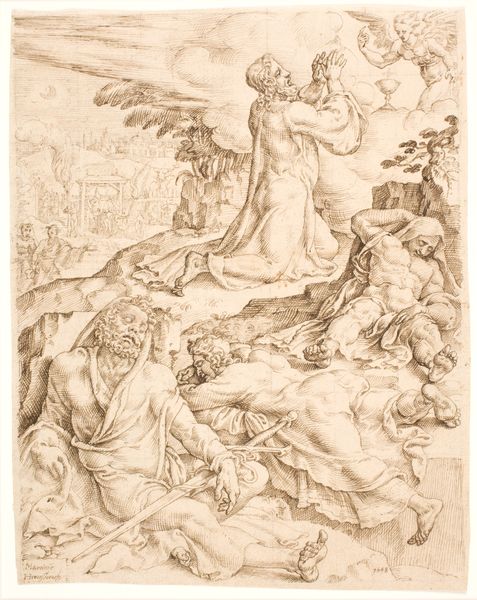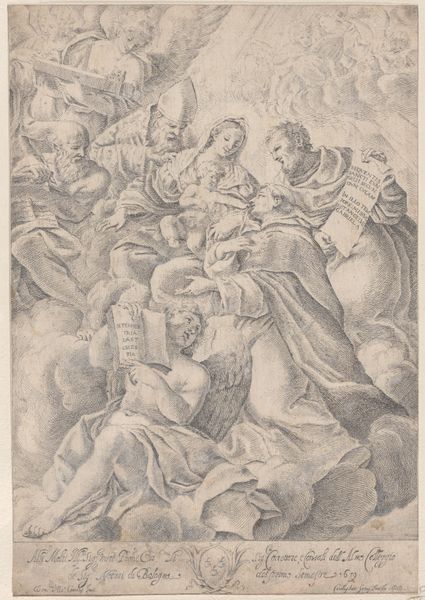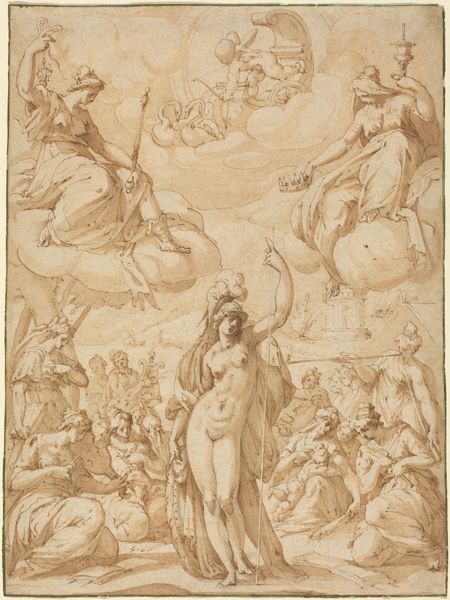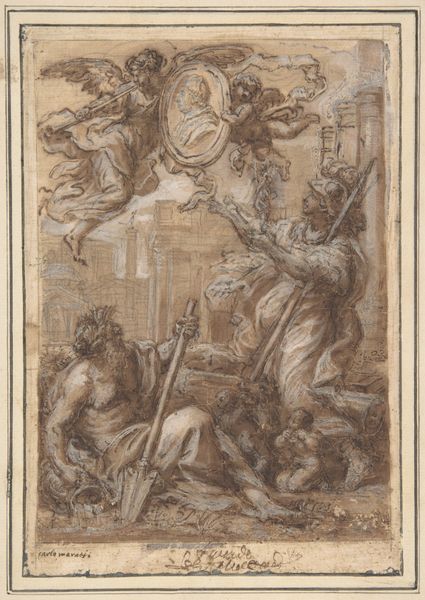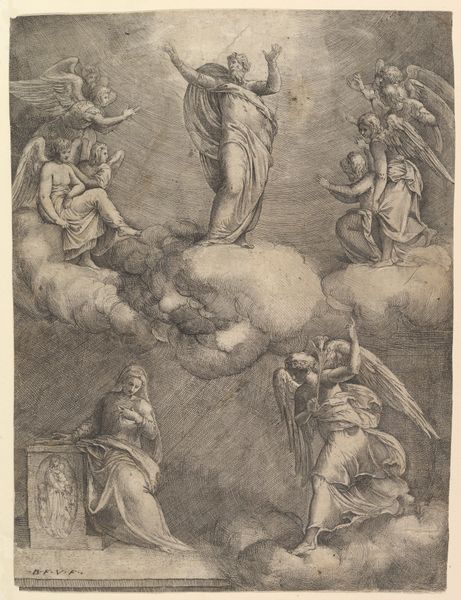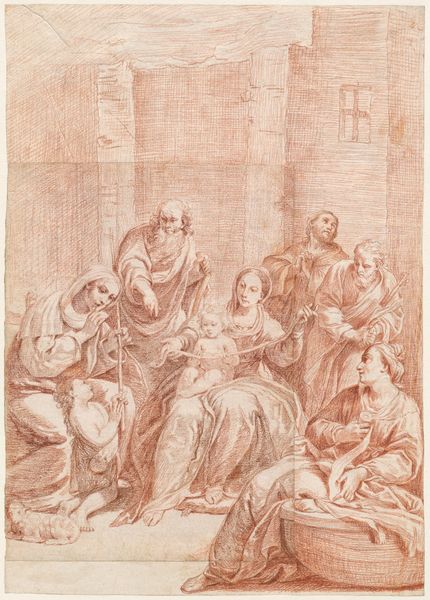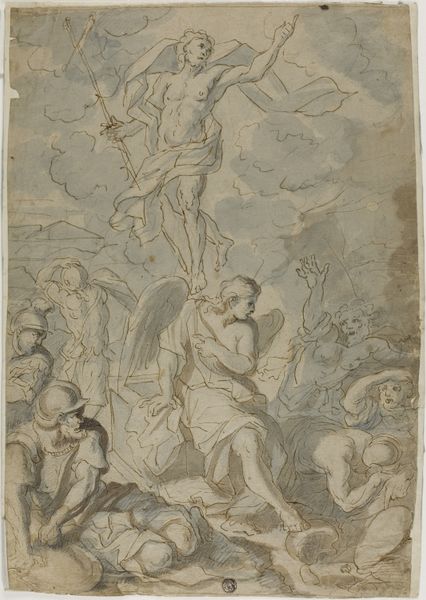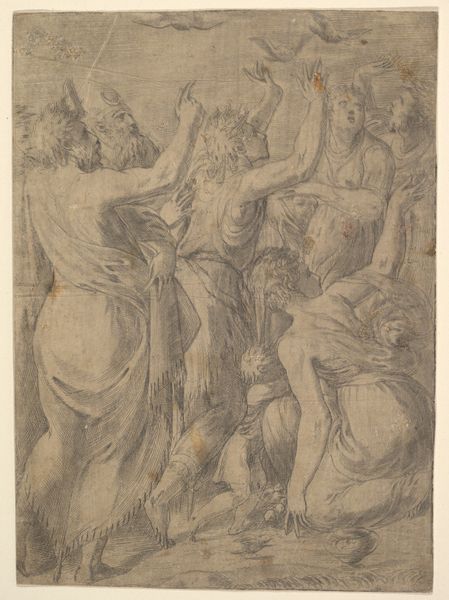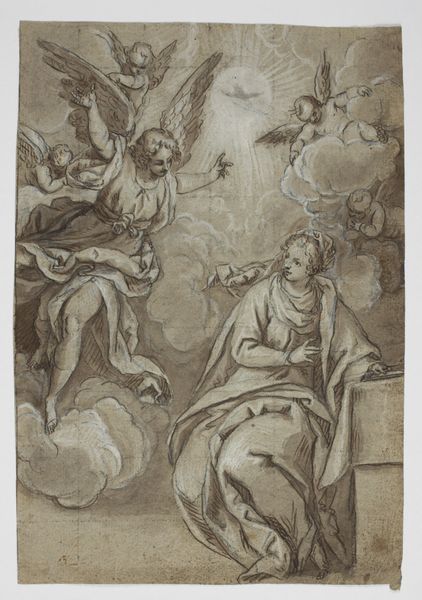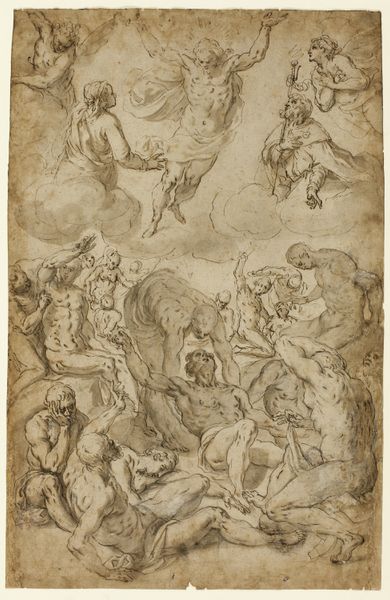
drawing, gouache, ink, indian-ink, charcoal
#
portrait
#
drawing
#
high-renaissance
#
gouache
#
charcoal drawing
#
figuration
#
ink
#
indian-ink
#
charcoal
#
history-painting
#
italian-renaissance
Copyright: Public Domain
Curator: This is Polidoro da Caravaggio's "Transfiguration," created sometime between 1535 and 1540. It's an Italian Renaissance drawing, a powerful work rendered in charcoal, ink, and gouache. Editor: My first impression is one of dynamism arrested mid-explosion. The composition, with its upward thrust, combined with the swirling cloud-like forms, gives it this potent feeling of contained energy. Curator: Indeed. The scene depicts the biblical Transfiguration of Jesus. It carries incredible weight. In the upper register, we see Christ elevated, flanked by Moses and Elijah, all symbols of law and prophecy, appearing in divine glory. Editor: Note how the figures are delineated with such incredible, almost sculptural line work. The play of light and shadow – the *chiaroscuro* – emphasizes their physicality. The tonal variations created by the washes of gouache add another layer. It’s interesting that Polidoro chose earth tones, muting the expected heavenly brilliance. Curator: That muting could speak volumes. Earth tones emphasize the human element of the story. At the bottom, the Apostles react with awe, even fear. We see the dramatic psychological impact of witnessing divine revelation, reminding us that even the sacred can inspire terror. Editor: Yes, their poses convey an immediate sense of humanity overwhelmed by the divine. Yet the ascending figure seems almost separate. It could be intentional on the part of the artist. What seems like dramatic motion, could easily also express stillness, completion. Curator: Exactly. Polidoro masterfully captures a pivotal moment in Christian theology, a powerful image that resonates through centuries. He's working within a deeply ingrained visual and narrative language. Editor: It’s a fantastic study of form and narrative merged in this very evocative way. I particularly admire how the materiality amplifies the expressive force of the figures in movement. Curator: It allows us to meditate on the transformation – not just of Jesus, but of perception and faith itself. Editor: Agreed, it is an enduring piece that manages to arrest an ephemeral instant within art history's visual vocabulary.
Comments
No comments
Be the first to comment and join the conversation on the ultimate creative platform.


